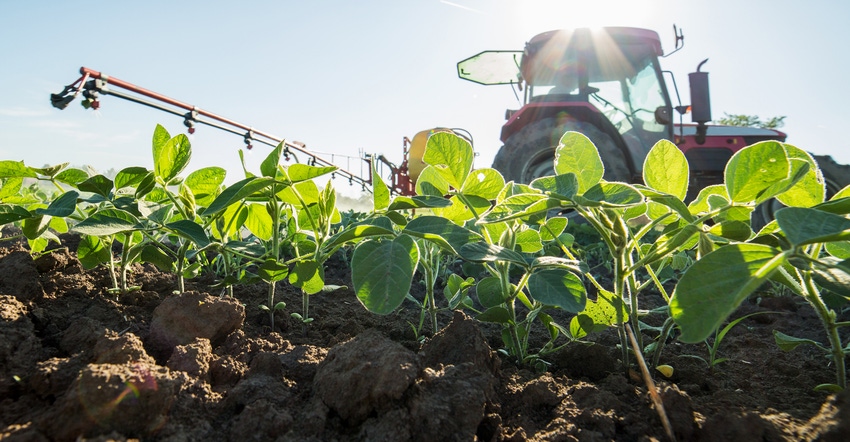July 1, 2021

As the weather warms up, fieldwork is ramping up all over Kansas this summer.
In the June 17 Extension Agronomy eUpdate, Sarah Lancaster, Kansas State University Extension weed science specialist, offers advice on applying herbicides in high temperatures, as well as considerations for double-cropping after wheat harvest and maintaining sprayer equipment.
High heat application
Summer temperatures are reaching 100 degrees F and higher all over Kansas. Lancaster advises growers to adjust their application plans accordingly.
She reminds growers that heat and drought stress:
• slow plant growth. Systemic herbicides need metabolic processes working in order to move herbicides through the plant. Applying early in the morning allows plants a chance to recover from heat stress the day before, and supplies the best chance for the herbicide to kill weeds.
• cause leaf changes. Plant cuticles become waxier, and leaf angles may also change in heat and drought stress, which makes it more difficult for water-based sprays to penetrate the plant. Use the maximum labeled rates of herbicides and surfactants to increase effectiveness.
• offer opportunity. Foliar, nontranslocated herbicides can result in greater weed control when applied to crops in hot, humid conditions. They likely result in greater foliar injury. Schedule application of contact herbicides for the heat of the day, when temperatures are higher than 90 degrees.
Lancaster also reminds growers that herbicide volatility increases with high temperatures and low humidity. That’s especially important to remember for herbicides such as dicamba and 2,4-D, which are prone to volatility. She says volatility of these products increases as the temperature rises above 60 degrees and is greatest at temperatures above 90 degrees. She advises not spraying those herbicides when temperatures are greater than 90 degrees. And, if they must be sprayed, use larger spray droplets to reduce evaporation.
Read more in the June 17 Agronomy eUpdate, Herbicide applications and high temperatures.
Double-crop considerations
Growers considering re-cropping wheat fields need to consider the herbicide programs that were used on the wheat crop, since many wheat herbicides have fairly long crop rotation restrictions, Lancaster advises.
Herbicide labels are the first stop for information, such as how soil pH may affect herbicide breakdown in a field. And some labels, Lancaster says, may allow shorter intervals in the case of catastrophic crop failure, as long as the grower is willing to accept the risk of crop injury.
“If you are in doubt about your decision, consider conducting a field bioassay to determine if it is safe to plant the crop you are considering,” she writes. “A field bioassay is simply a short strip of crop planted across the direction of the herbicide application. Plants in the strip are monitored for herbicide injury as they emerge.”
To learn more, visit the June 17 Agronomy eUpdate, Herbicide carryover considerations when planting after wheat.
Sprayer maintenance
Farmers know they have to properly and thoroughly clean out sprayers between applications. Not only does it prolong the life of the sprayer, but it also prevents crop injury from equipment contamination.
“Thorough sprayer cleanout is important following all pesticide applications, but it is even more critical after use of certain herbicides,” Lancaster writes.
That’s why K-State Research and Extension recently updated its publication MF1089, Cleaning FIeld Sprayers.
Source: Kansas State University Research and Extension is solely responsible for the information provided and is wholly owned by the source. Informa Business Media and all its subsidiaries are not responsible for any of the content contained in this information asset.
You May Also Like




